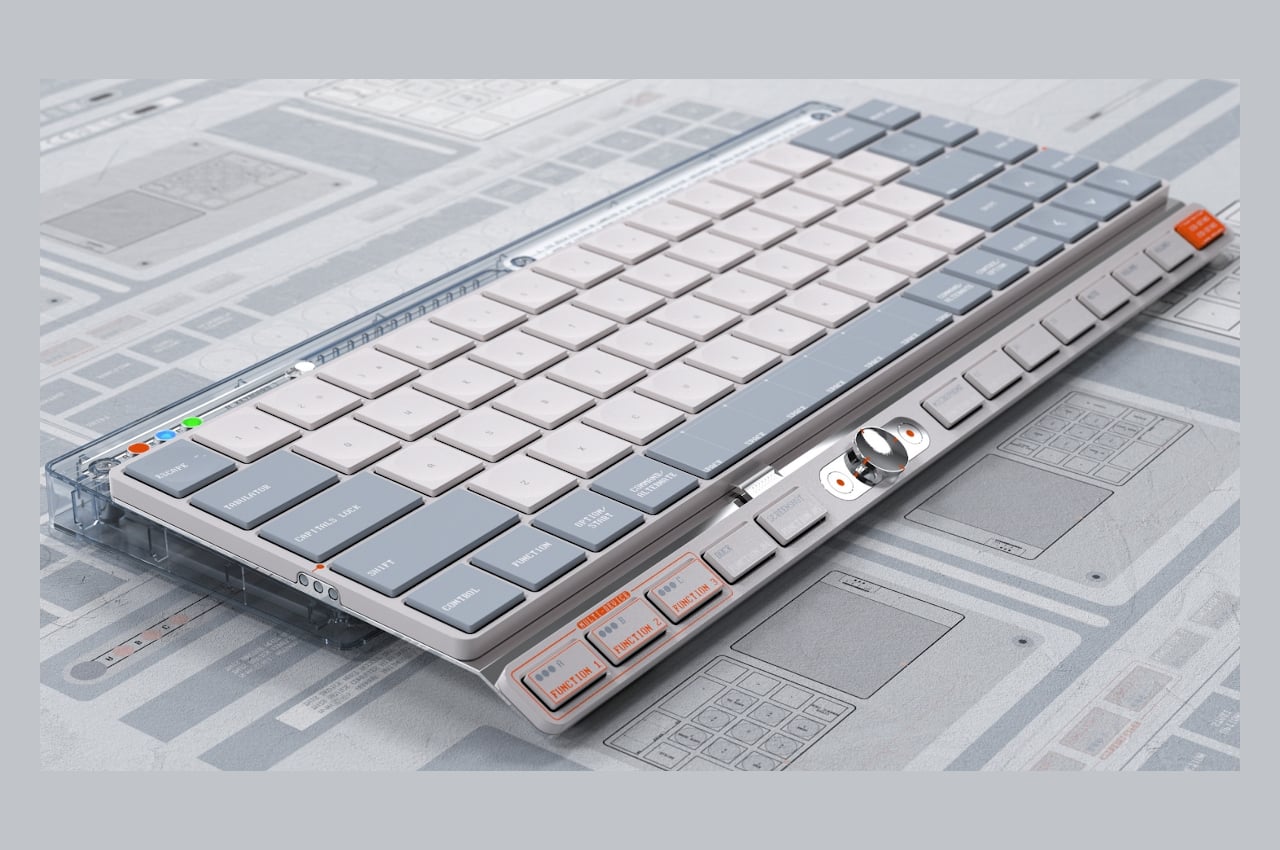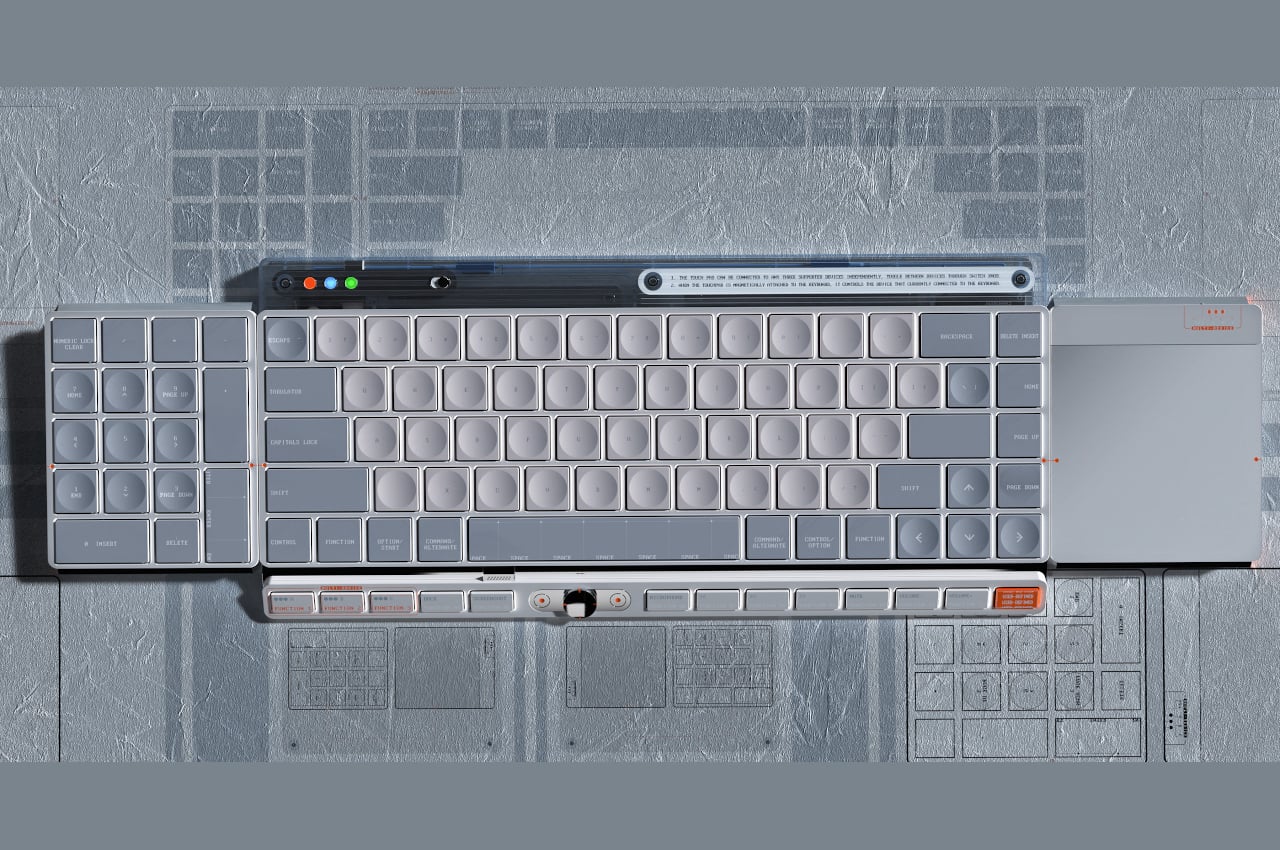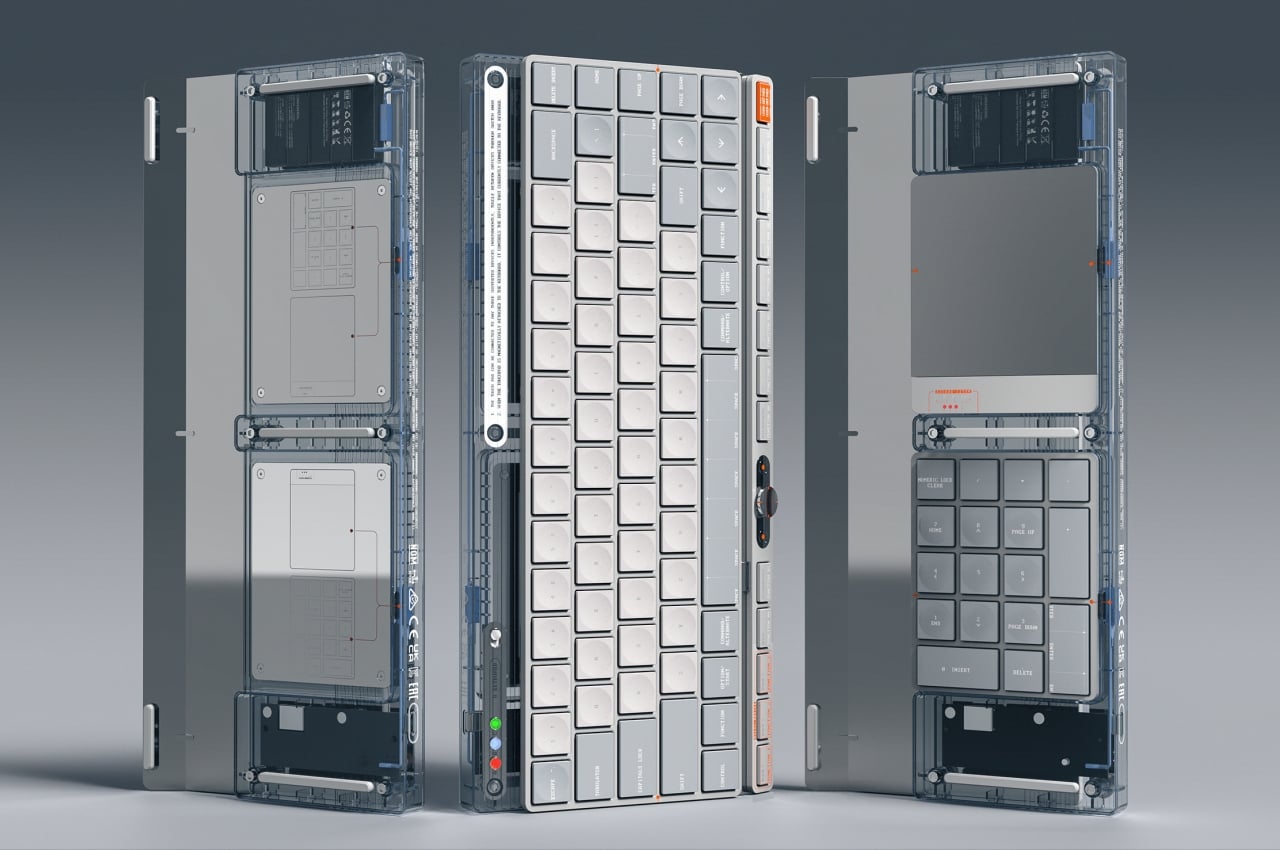
A computer keyboard is to a computer user as an instrument is to a musician. It is an indispensable tool in that line of work, particularly for creating things. But while musicians use every penny available for the best instrument their money can buy, most computer users skimp on keyboards as if they were inconsequential and unnecessary accessories. There are some cases, however, where people are forced to stick with certain keyboards, like a “tenkeyless” keyboard that saves at the expense of comfort and convenience. Those limitations, however, might not always be there, and this keyboard concept offers people the freedom to define the keyboard experience they need when they need it while also bringing a few other tricks to tickle power users’ fancy.
Designer: Zhang Zhirui


Computer keyboards have traditionally been large and bulky, with the “standard” keyboard occupying a lot of table space thanks to what is often called the numeric keypad or “numpad.” The dawn of laptops, however, forced keyboards back into a more compact form that included only the most essential keys, giving birth to what is now known as TKL or “tenkeyless” configurations. That numpad, however, isn’t just for show, and some people end up buying a separate numeric keypad just to fill the gap.
This keyboard concept manages to bring the best of both worlds by letting the user choose which way to go at any given time. That, of course, means that the keyboard is modular so that the numpad can be added or removed as needed. It’s not just that keypad, however, as the concept also includes a modular touchpad you can put on either side of the TKL keyboard in lieu of a mouse. What makes this concept interesting beyond the added functionality is how it manages to still keep everything in one compact space when only the keyboard is needed.
The numpad and touchpad magnetically attach to either side of the keyboard, allowing you to have different arrangements to fit your space, need, or habits. Finally, left-handed users can have a touchpad that’s actually convenient to use. The touchpad also works wireless and can connect to different devices. When it’s magnetically connected to the keyboard, however, it immediately controls the computer that the keyboard is connected to.
The keyboard adopts a design that looks both futuristic yet also has elements that seem to pay homage to the colors, shapes, and fonts of older keyboards. The transparent rear gives it a bit of a cyberpunk flair as well. The keyboard’s design still manages to look clean and tidy, and the modular parts disappear underneath the keyboard to charge when not in use.
The keyboard also has an additional row of buttons at the bottom, along with a thumbstick that replaces a mouse when the touchpad isn’t connected. The ergonomics of this pointing tool are a bit questionable, and the chances of people hitting the buttons with their palms seem to be a bit high. Of course, as a concept, it still has plenty of benefits over regular TKL keyboards that don’t have these extra buttons, but it might need a bit of refining to make sure that the keyboard remains comfortable and ergonomic as well.